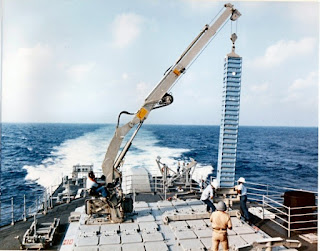George Friedman over at RealClearWorld has a great way for you to start your week.
When you look at a map of China, you will see that a good part of what we think of China is not ethnically Chinese.There is a lot to chew on in this efficiently constructed article.
...
Within Han China, there are also divisions. The population is concentrated in the east because western China has limited rainfall and can’t sustain very large populations. In this sense, China is actually a relatively narrow country, with an extremely dense population. The interests within Han China are also diverse, and this has frequently led to fragmentation and civil war.
The most important distinction is the one between coastal China and interior China. Coastal China, when left to its own devices, is involved in regional and global maritime trade, while the interior has fewer commercial opportunities. Coastal China’s priority is reaching its customers, whereas the interior wants Beijing to transfer the wealth from the coast to help support the poor interior. Many other regional disagreements exist of course, but this is the source of discord between the two regions.
A great example of its efficiency is how the author explains in just a few short paragraphs the reason and real fragility of two of their signature programs this century; the "One Belt-One Road" and China's growing navy;
In the event there was an economic falling out with the U.S., China had to consider the possibility of a military confrontation. But the key issue was the ability to guarantee China’s access to sea lanes. In this, China had a major geographic problem. The South and East China seas are ringed with small islands, spaced in such a way that passage between them can be blocked with relative ease. The U.S. Navy is far superior to the Chinese navy, and the Chinese were concerned that in some unforeseen crisis the U.S. would block access to their much needed sea lanes. Those small islands were now at the center of Chinese national interest. The Chinese could claim the entire region, but they were not in a position to seize it.Like I said, there is a lot here to ponder about your assumptions of China headed to mid-century.
At the same time, the Chinese devised a political solution to their strategic problem. If a country like Indonesia or the Philippines aligned with China instead of with the United States, access to the global sea lanes would be assured without having to confront the United States. The problem here is that the two strategies undermined each other. Aggressive assertion of Chinese power in the regional waters and finding accommodation with regional powers were inconsistent approaches. What’s more, they could only work if the United States was not present. And, of course, it was.
China had one other option for getting around potential U.S. actions: creating an alternative export route through Asia to Europe. This was the One Belt, One Road concept. But it, too, was flawed. First, the cost of building the requisite infrastructure was staggering. Second, it would run through countries that were unstable and, for the Chinese, unimportant customers. Add to that the speed with which One Belt, One Road needed to be enacted, and this was more posturing than policy.
This is a strategy that emerges not from a position of strength but from one of fundamental weakness. China’s internal contradiction is that prosperity creates instability, and stability is incompatible with prosperity. There are complexities and nuances of course, but this is the root of China’s problem. China is therefore trying to maintain what prosperity it can without destabilizing the system. In doing this, it is jeopardizing its overseas markets, particularly the United States, creating the opportunity for a conflict it can’t win and opening the door to regionalism and warlordism.
Unlike Japan, which moved from being a high-growth country to a low-growth country without social upheaval, China may not be so lucky. Japan had a homogeneous, socially integrated society. China is not homogenous, and it has irreconcilable social differences. Its global strategy reflects these contradictions and ultimately poses a greater risk to China itself than to others. And in such a situation, the key is to look confident and try to keep others off balance. But this can only work for so long.

























